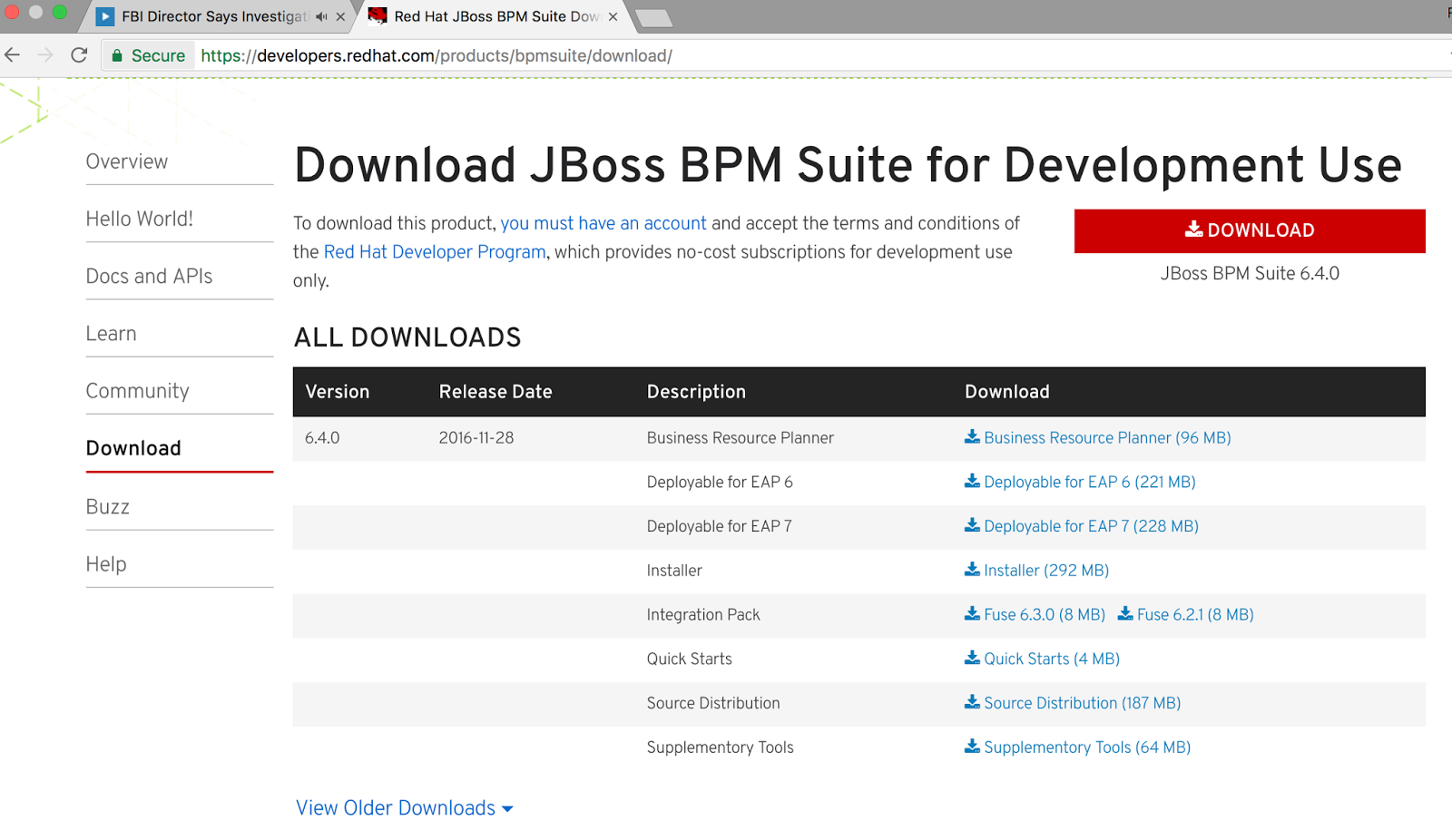Download Jboss Eap 6.4 For Mac
I've run into an odd issue with JBoss EAP 6.4 on an Ubuntu Linux server with JDK 7. Things were working fine for a couple of weeks since I installed JBoss and I've been doing some iterations of my app, a straight-up JavaEE app with JSP and Java servlets. I've been deploying using the admin console.

Here's what has started happening. I redeploy (or undeploy and deploy) my .war file and it deploys without any errors. But my JSP pages are never updated. The server keeps serving up the old version of the JSP. I've tried all manner of undeploy/redeploy, I tried copying the .war file to the deployment folder, I've tried stopping and restarting JBoss, none of those things help.
This allows you to maintain the same minor version of JBoss EAP, while staying current with high severity and security patches. For example, updating from this repository will include patches and security updates for the minor JBoss EAP version, but will not include upgrades from JBoss EAP 7.1 to JBoss EAP 7.2, if it is released.
- Ready to use JBoss EAP in Production? With a Red Hat subscription, you can deploy your application into a production environment and get world-class expertise and knowledge about security, stability, and maintenance for your systems.
- In this blog I am going to guide you how to install Red Hat JBoss Enterprise Application Platform (EAP) on OS X, If you want to know more about Red Hat JBoss EAP, please refer the following url.This is beginner level tutorial.
- Except for editting standalone.xml, JBoss Datasources and Security Policies can be defined using CLI or JBoss Web Console as described in JBoss EAP 6.4 Admin Guide. Datasources can be defined in EARs but such ones are not managed, see JBoss EAP 6.4 Admin Guide. Access the Sample Portal.
The only solution I've found is to stop JBoss, delete the folder for my app under ../standalone/tmp/wor/jboss.web/default-host/<MY APP NAME>
When I do that I see a java version of my jsp file (index.jsp) there jsp/index_jsp.java and then when I hit the page in my web browser the compile kicks in and I see an updated index_jsp.class file there as well.
But if I don't delete that directory tree, the old JSP is there and it just sticks around. I checked my server time and it was off by 10 minutes but I re-synched the time and that didn't change anything.
I have a local copy of JBoss EAP 6.4 running on my Windows PC as a development instance and it's not having this problem there. Also the strangest thing is that this just started happening yesterday.
Thanks in advance for any suggestions.
An application platform for hosting your apps that provides an innovative modular, cloud-ready architecture, powerful management and automation, and world class developer productivity.
Get started with EAP
Hello World for JBoss EAP Runtime via CodeReady Studio
Step by step guide on setting up your dev environment, installing and then building your first JBoss EAP application.
Featured Resources
Streamline your JBoss EAP dev environment with Red Hat CodeReady Workspaces: Part 1
Streamline your JBoss EAP dev environment with Red Hat CodeReady Workspaces: Part 2
Explore dozens of quickstarts in these Github repos built by the Red Hat Middleware team. These small, specific, working examples that can be used as a reference for creating new projects that run localhost or on Red Hat OpenShift. If you are a beginner or new to JBoss EAP, start with the quickstarts labeled Beginner, then try those marked as Intermediate. When you are comfortable with those, move on to the Advanced quickstarts.
Docs and APIs
Jboss Eap 6.3 Download
JBoss EAP 7.2.0
Contribute
Red Hat Enterprise Application Platform is backed by a large community to help support you, along with sample code and documentation. Join the discussion and contribute to the open source community projects built into Red Hat Enterprise Application Platform.
Hibernate ORM, a relational database persistence project
IronJacamar, the project for Java Connector architecture
JBoss Clusteringweb and web services projects, extending the application server
JBoss Microcontainer, the project supporting standalone JMX microkernels
JGroups, the project for group communication
Narayana, the transaction manager project
Open Services Gateway Initiative(OSGi), the project for modular dynamic code libraries
PicketLink, the project for identity management for Java apps
RESTEasy, the project for building RESTful services for Java apps
Weld, the project for creating contexts and dependency Injection for Java EE
Wildfly, a flexible, lightweight, managed application runtime built on Java EE 8
Best photoshop apps for mac. Wise, the project for no code web services implementations
- XNIO, the project for low-level IO and an alternative to NIO
The JBoss EAP Developer Contribution Guidehas everything you need to get started with contribution.
Migrating Java applications into Red Hat OpenShift
Moving Java applications to Red Hat OpenShift can seem daunting, but it can be worthwhile. Join Red Hatters Derek Foster and Krystal Ying as they whiteboard the capabilities and benefits that OpenShift provides Java applications: horizontal scaling, load balancing, and support for continuous integration/continuous delivery (CI/CD).
Jboss Eap Versions
Ready to use JBoss EAP in Production?
Jboss Download For Windows 10
With a Red Hat subscription, you can deploy your application into a production environment and get world-class expertise and knowledge about security, stability, and maintenance for your systems. Our subscriptions provide many benefits including access to resources, expertise, upgrades, and the ability to directly influence our commitment to providing an exceptional customer experience.